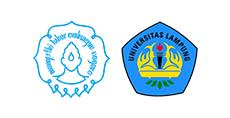The Impact of Disruptive Technologies on Higher Education in Indonesia
Abstract
Keywords
Full Text:
PDFReferences
Allen, I. E., & Seaman, J. (2010). Class differences: Online education in the United States, 2010. Sloan Consortium (NJ1).
Bower, J. L., & Christensen, C. M. (1995). Disruptive technologies: catching the wave.
Brown-Liburd, H., & Vasarhelyi, M. A. (2015). Big Data and audit evidence. Journal of Emerging Technologies in Accounting, 12(1), 1-16.
Christensen, C. M. (1997). Marketing strategy: learning by doing. Harvard business review, 75(6), 141-151.
Christensen, C. M., & Eyring, H. J. (2011). The innovative university: Changing the DNA of higher education from the inside out: John Wiley & Sons.
Horn, M. (2018). Will half of all colleges really close in the next decade. Christensen Institute.
Kitcharern, N. (2019). Reality and Rhetoric of Changes in Thailand's University Admission Policy, 1999-2017. Journal of Social Sciences Naresuan University, 15(1), 15_117-138.
Ministry of Research, T., & Education, H. (2018). Higher education statistical year book 2018. In: Pusdatin Iptek Dikti Setjen, Kemristekdikti.
Soegoto, A. S. (2014). Orientasi dan strategi pemasaran dalam menciptakan keunggulan posisional serta dampaknya terhadap kinerja perguruan tinggi. Trikonomika Journal, 10(1), 19-30.
Susskind, R. E., & Susskind, D. (2015). The future of the professions: How technology will transform the work of human experts: Oxford University Press, USA.
Supingah, I. (n.d.). Retrieved February 2020, from https://kelanakota.suarasurabaya.net/news/2020/231602-APTISI:-Banyak-Program-Studi-Tutup-di-Era-Disrupsi-dan-Kemajuan-Teknologi













